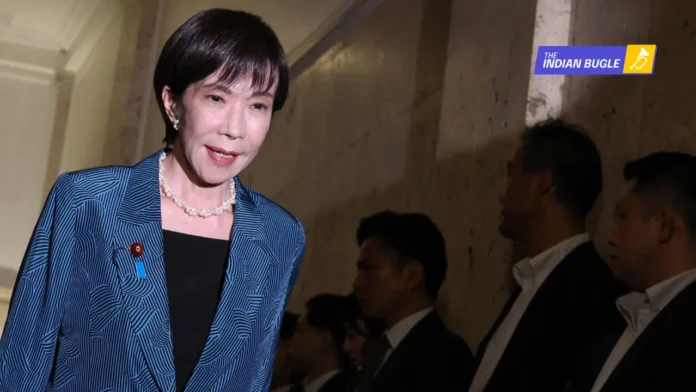On October 21, 2025, Japan made history when the lower house of parliament elected Sanae Takaichi as the country’s first female Prime Minister. Her rise marks a significant turning point in Japanese politics — a country known for its male-dominated leadership traditions. Takaichi’s journey from a small-town girl in Nara Prefecture to the most powerful political position in Japan represents both a personal triumph and a broader social shift.
Early Life and Political Beginnings
Born on March 7, 1961, in Yamatokōriyama, Nara Prefecture, Sanae Takaichi was raised in a conservative household. She graduated from Kobe University, where she first developed an interest in politics and governance.
Before entering politics, Takaichi briefly worked as a broadcaster and legislative aide, experiences that helped her understand public communication and policy debates.
In 1993, she was first elected to Japan’s House of Representatives as an independent candidate. Three years later, she joined the Liberal Democratic Party (LDP), aligning herself with Japan’s most powerful political organization.
Rise to Prominence
Over her three-decade career, Takaichi served in several key roles within the government. She was notably appointed as:
- Minister for Internal Affairs and Communications
- Minister of State for Economic Security
Her close association with former Prime Minister Shinzo Abe helped her solidify her political base and establish herself as one of the most prominent conservative voices in Japan.
In October 2025, she was elected as the leader of the Liberal Democratic Party, paving her way to become Japan’s 104th Prime Minister after securing the majority in the lower house.
Political Ideology and Beliefs
1. Conservative Nationalism
Takaichi is widely regarded as a strong nationalist and a staunch conservative. Often referred to as Japan’s “Iron Lady,” she has consistently emphasized patriotism, national pride, and constitutional reform.
She has long supported revising Article 9 of Japan’s Constitution — the clause that renounces war — in order to give Japan’s Self-Defense Forces a stronger legal foundation.
2. Economic Vision
Economically, she follows the legacy of “Abenomics,” promoting growth through innovation, deregulation, and digital transformation. Her policies aim to boost Japan’s competitiveness while protecting traditional industries and ensuring national security in supply chains.
3. Gender and Social Policy
Although Takaichi shattered a major glass ceiling by becoming Japan’s first female Prime Minister, her stance on gender equality remains conservative. She opposes certain progressive reforms, including changes to imperial succession laws that would allow women to ascend the throne.
Despite this, her leadership itself has become a symbol of empowerment for many Japanese women aspiring to participate in politics.
Historic Significance
Sanae Takaichi’s appointment as Prime Minister represents a milestone moment for Japan:
- Breaking Gender Barriers: She is the first woman ever to hold Japan’s top political post.
- Political Transformation: Her rise signifies the growing acceptance of female leadership in a traditionally male-dominated system.
- Global Attention: International observers have noted her leadership style, comparing her to other assertive female leaders like Margaret Thatcher and Indira Gandhi.
Challenges Ahead
Takaichi inherits a country facing multiple domestic and international challenges:
- Economic Pressure: Inflation, a weak yen, and an aging population continue to strain Japan’s economy.
- Geopolitical Tensions: Relations with China and North Korea remain delicate amid her strong pro-defense stance.
- Coalition Politics: Her government is a minority coalition, which may complicate efforts to pass key reforms.
- Public Expectation: Many citizens hope for social change under her leadership, particularly in terms of women’s representation and youth empowerment.
Balancing Japan’s conservative traditions with global expectations of modern governance will be a defining test of her premiership.
Japan Under Takaichi’s Leadership
Takaichi’s leadership marks a shift toward stronger national defense, technological innovation, and economic self-reliance. She is expected to emphasize Japan’s role as a global leader in both regional security and advanced industries such as semiconductors, robotics, and clean energy.
Domestically, she faces pressure to modernize Japan’s political culture while maintaining stability. Her assertive yet disciplined approach may redefine how Japan navigates its future in an uncertain global environment.
Conclusion
Sanae Takaichi’s rise to the position of Prime Minister is not just a political event — it’s a historic transformation for Japan. Her conservative ideology, unwavering determination, and strong leadership style have made her a defining figure in modern Japanese politics.
As Japan stands at the crossroads of economic and geopolitical change, Prime Minister Sanae Takaichi embodies both the challenges and the possibilities of a nation striving to balance tradition with progress.
Her tenure will reveal whether Japan’s “Iron Lady” can truly reshape the nation’s future while staying true to its identity.
